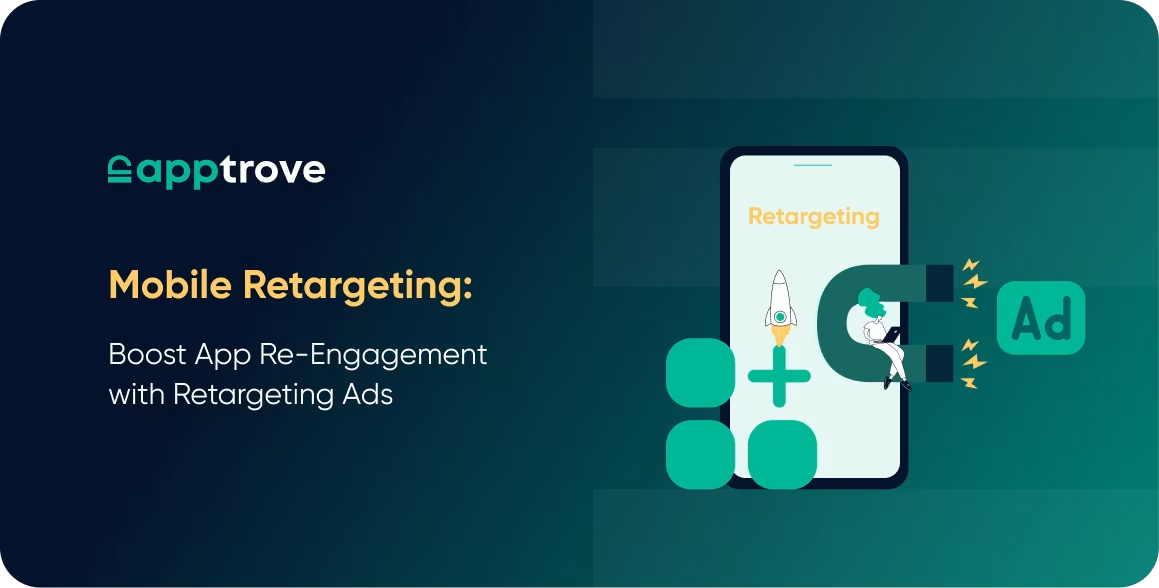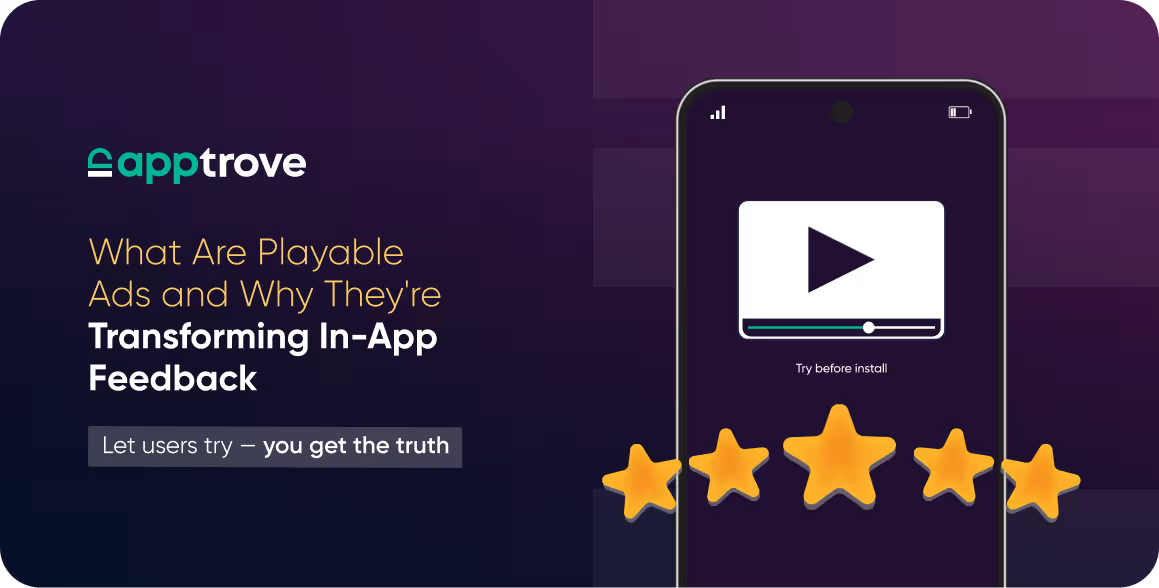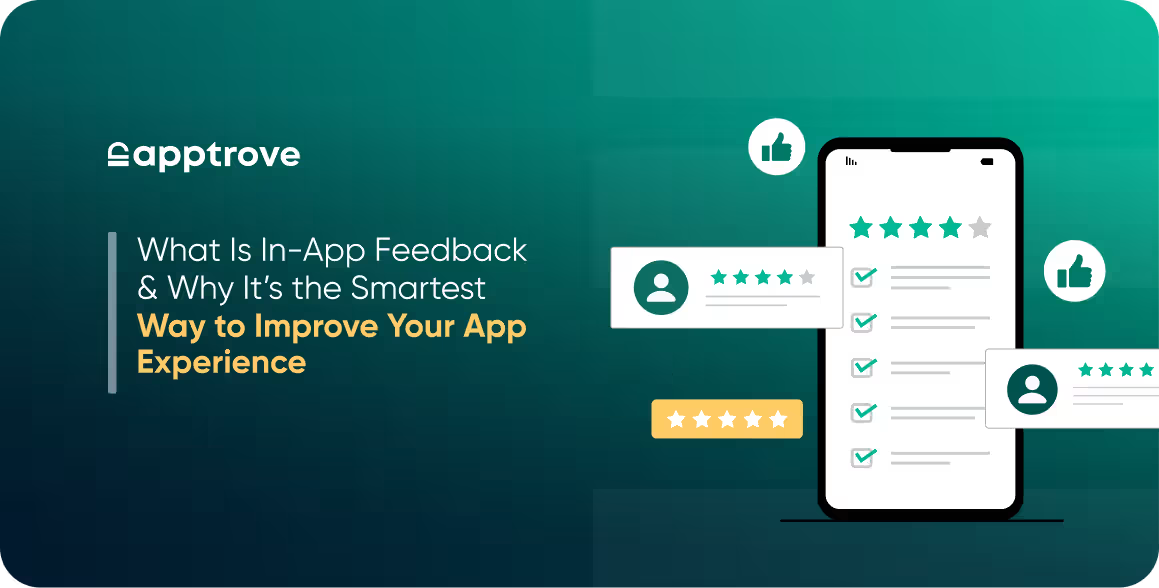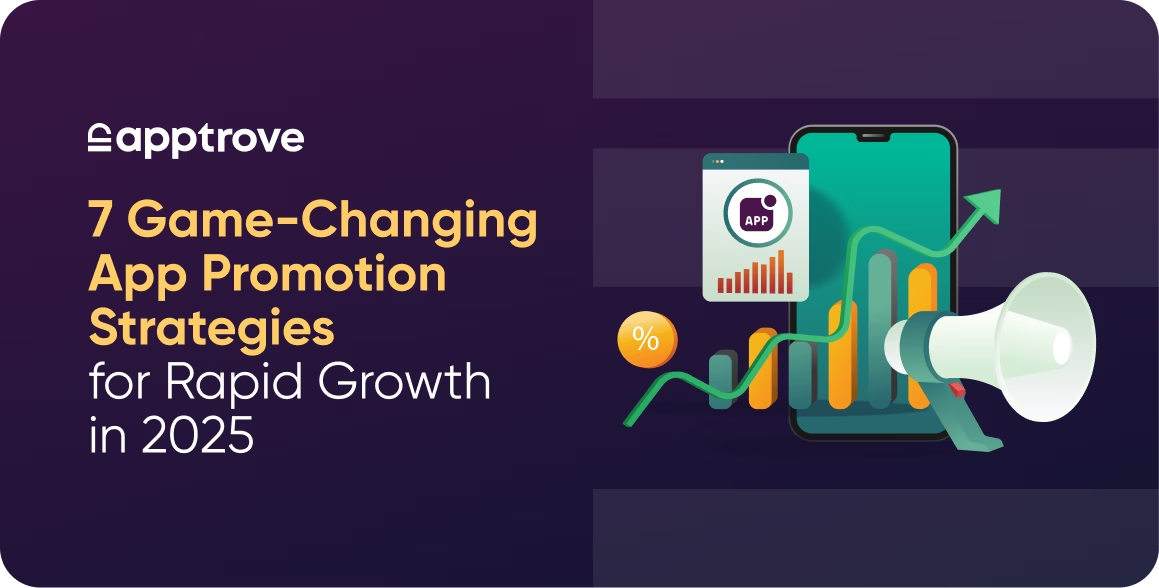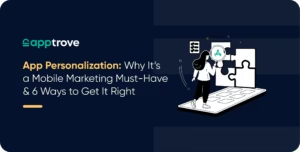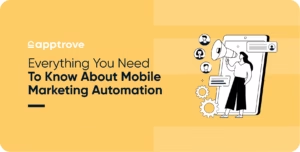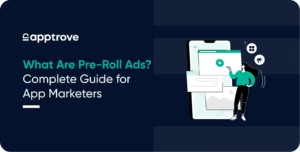Did you know nearly 71% of app users churn within 90 days after they install an app? That’s an astounding stat, and it’s one that many app marketers have to face. Sure, acquiring users is challenging, but getting them to stay engaged is even more challenging, and that’s where mobile retargeting comes in.
Mobile retargeting should be viewed as a necessity, not just a nice-to-have strategy, for app owners and marketers looking to maximize return on ad spend, increase user retention, and ultimately grow a sustainable app. It is a way to re-engage those lost, dormant, or inactive users by serving them targeted ads with personalized messaging that will bring them back into your app and help strengthen your bottom line.
In this blog, we’re going to cover everything you need to know about retargeting, including what it is, the benefits, types of strategies, ad formats, and best practices with the help of Apptrove. By the end, you will have everything you need to leverage retargeting to create a winning retargeting plan that not only brings users back but also keeps users engaged and loyal.
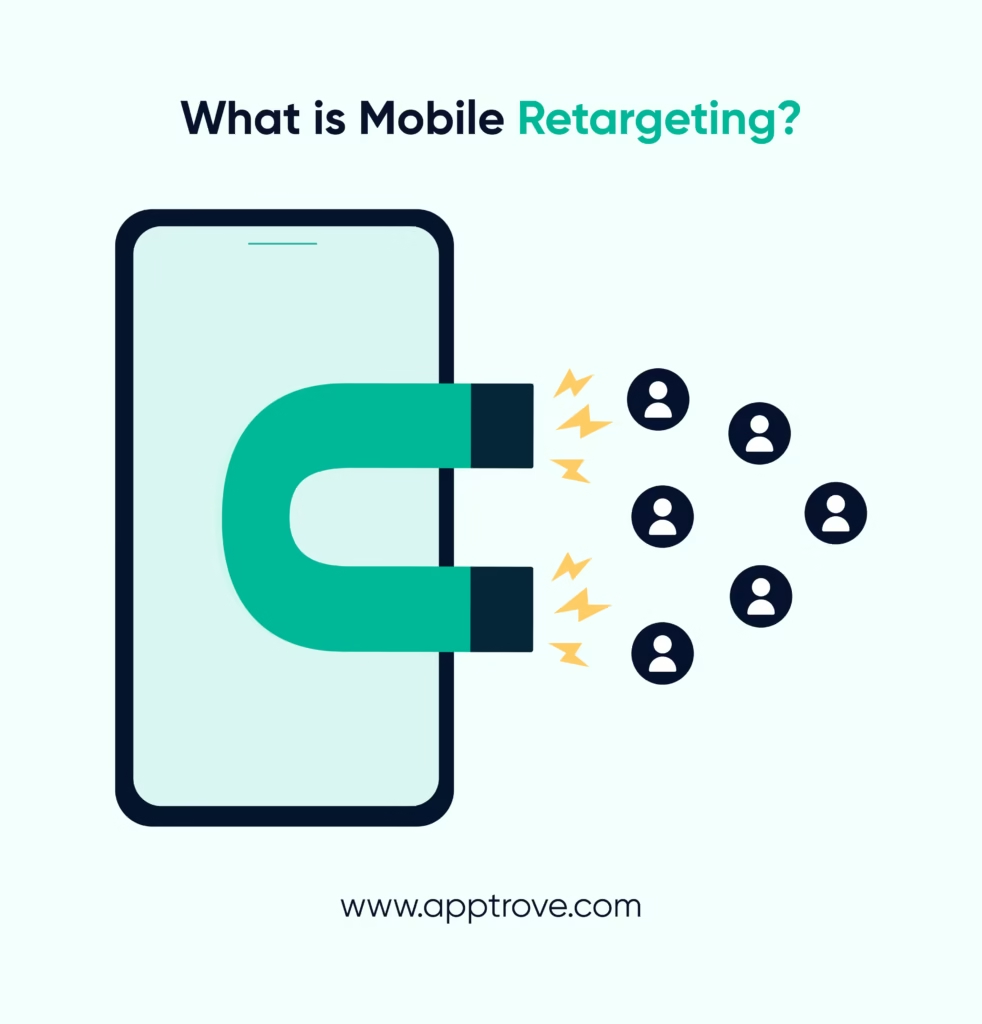
What Is Mobile Retargeting?
At its essence, mobile retargeting is the process of serving ads to users who have already interacted with your app or website but have not completed the desired action. This could be users who downloaded your app but never signed up, shoppers that abandoned their cart, or visitors that normally open your app regularly that haven’t opened it in a number of weeks.
Research shows nearly 70% of shopping carts are abandoned before checkout online. That’s a huge pool of users that showed intent to purchase, but did not complete the desired action.
Mobile retargeting helps you remind the users of what they are missing. Rather than chasing downloads constantly, it empowers you to extract maximum value from your current audience, and recover lost conversions.
How Mobile Retargeting Differs from App Retargeting
It’s common for mobile retargeting and app retargeting to be seen as synonyms; however, there is a slight difference.
- Mobile retargeting can relate to both app experiences and mobile web experiences. It is defined by showing ads to users across different mobile touchpoints as a way to re-engage users.
- App retargeting is more specific in nature. Whereas, app retargeting is about re-engaging users again within apps. App retargeting targets audiences based on how they interacted or behaved in the application.
Both processes are working towards the same goal – keeping your audience engaged and active; however, recognizing the difference helps in creating focused campaigns.
Why Mobile Retargeting Matters for App Growth
A frequent misstep app marketers make is to focus efforts on acquisition solely. Sure, getting installs matter, but that’s not where revenue is generated. Retention and re-engagement really drive revenue.
The Retention Problem in Apps
Across the board, retention is a major issue. On day 30, only a fraction of users still have the app installed and are engaged with it in even some minor way. If they didn’t see retargeting ads or strategies to bring them back, they are gone for good. Mobile retargeting is often a second-chance or third chance at converting them.
Driving ROI Through Re-Engagement
The cost of acquiring a new user is way higher than that of re-engaging a current user. It saves dollars but it also drives better either breakeven or ROI because you’re talking to someone who already knows your app. All they need is a little nudge to come back and finish the journey.
How Does It Work
Data fuels mobile retargeting campaigns, applying actions such as session frequency, web activity (e.g., abandoned carts), in-app search, etc., offer insight to create relevant audience segments.
When a user utilizes your app and interacts, but fails to complete the desired action, they become a prospect in your retargeting pool. Your ads will be displayed as they move about mobile channels (social, search, in-app), hoping the ads will entice them to return.
Advertising Channels for Retargeting
- Social Platforms: Facebook, Instagram and TikTok allow for granular targeting for re-engagement.
- Search: Google Ads allows for retargeting level messages to show when users browse online.
- In-App Ads: Advertisements placed in other apps can push users back to yours.
When ads are being served through these channels, they will have maximum value when campaigns can be personalized to the user’s last interactions and contextually relevant to the last interaction.
Strategies for Effective Mobile Retargeting
Creating effective retargeting campaigns is more than just asking users to engage with your ads, it is about being strategic in your approach and creating a personalized experience for your users.
Audience Segmentation
Audience segmentation is essential in effective re-engagement. For example, the messaging for users who have previously abandoned a cart will likely differ from users who haven’t opened your app in over a month. When you segment your audience, your ads will feel less annoying.
Personalized Messaging
Most of the time, retargeting ads are general and bland. Instead of this, why not maximize consumer engagement by personalizing the user’s messaging? You can include the user’s abandoned cart item in the ad or provide a discount for a subscription plan they’ve previously viewed.
Frequency Capping
No one likes to feel like they’re being stalked on the internet. Frequency capping is used in effective retargeting to show users your sponsored retargeting ads, but limit the number of times the user sees the ads. This way you keep the user engaged without negatively impacting their experience and over saturating the user with ads.
Types of Retargeting Ads for Mobile Campaigns
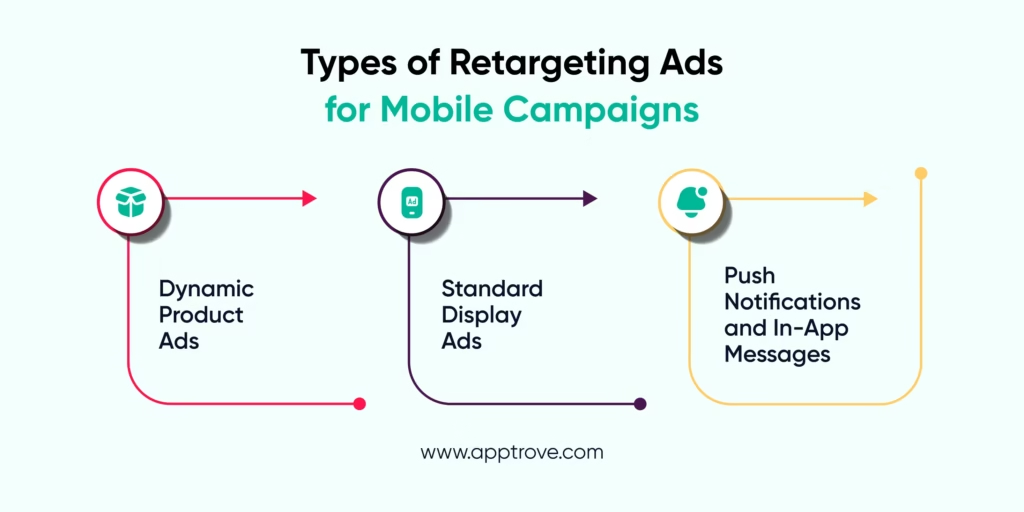
Dynamic Product Ads
Dynamic product ads are extremely personalized; they showcase the precise products or services a user interacted with before leaving your app. For example, an e-commerce app can create ads for the same sneakers a user added to their cart.
Standard Display Ads
These ads are less personalized, yet just as effective. They are often part of a more extensive app retargeting strategy to re-engage inactive users with reminders about how great their app is or what new features are available in the app.
Push Notifications and In-App Messages
While neither of these are technically ads, push notifications and in-app messages are essential layers of re-engagement. These methods can be leveraged with your ad campaigns as a multi-channel retargeting strategy.
Best Practices for Mobile Retargeting
Utilize Deep Linking
At its simplest, deep links help guide users to the exact page inside of your app, instead of dropping them back at the homepage. This shortens the journey and increases the chances to convert.
Time Campaigns Strategically
Timing is crucial. Users are much more likely to engage with retargeting ads if they are shown shortly after cart abandonment or closing the application altogether. The longer you wait to engage these users again, the more difficult it can be to get their attention.
Optimize for Privacy
Privacy regulations, including numerous data privacy laws, are on the rise. For this reason, obtaining explicit consent, and how data is used and stored, now more than ever must demonstrate security. With user’s data, respecting privacy builds trust – which is good for business and compliance.
Measuring the Success of Retargeting
You need metrics to determine whether your retargeting efforts generated results.
Key Metrics
- Click-Through Rate (CTR): Shows how well your ads grabbed attention.
- Conversion Rate: Shows how many visitors returned and took action.
- Return on Ad Spend (ROAS): The final measurement of profitability for your campaign.
These metrics help you hone your retargeting campaigns for maximum performance.
Conclusion
Mobile retargeting has become inevitable; there’s no longer an option. If you’re going to have a mobile strategy, you must build retargeting into it. With user churn occurring at such high rates, re-engagement and retention is the only way to maximize the lifetime value of every install.
With Apptrove, you can go beyond generic retargeting. By leveraging advanced segmentation, personalized ads, and dynamic retargeting formats, Apptrove makes it easier to re-engage lost users, boost retention, and ultimately generate more revenue for your app.
If you are solely focused on acquisition, now is the time to rethink your strategy. Your best users may not be the ones you have yet to acquire but the ones you already have. Apptrove’s retargeting solutions help you bring them back and keep them engaged!
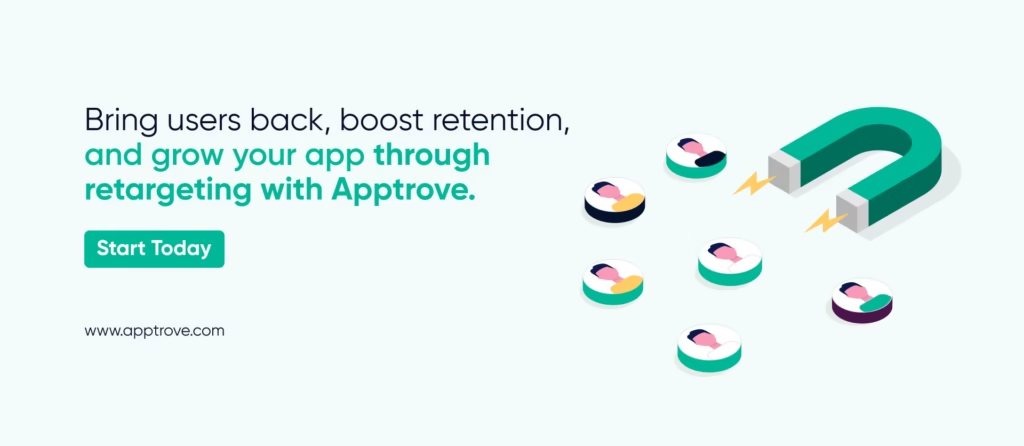
FAQs
1. What is retargeting in mobile marketing in simple terms?
Retargeting in mobile marketing is when you show ads to people who interacted with your app or site, but did not complete one of your desired actions – like making a purchase.
2. How is app retargeting different from retargeting on mobile?
App retargeting is only saying something about app activity where retargeting on mobile is saying something about mobile activity including mobile web behaviors and app usage.
3. Why are retargeting ads successful for apps?
Retargeting ads can be successful because they target users who already know your app. They do not have to start from scratch to gain a user’s attention. They remind the user of something they did not capture or finish, and urges them to return.
4. What’s the role of re-engagement in retargeting campaigns?
Re-engagement supports keeping current users engaged. This helps you with reducing churn, deepening loyalty, and increasing lifetime value of each user.
5. What metrics should I pay attention to, to track success of retargeting?
The metrics you want to pay attention to are CTR, conversions, and ROAS. This metrics indicate how well your campaigns are bringing users back, and revenue generation.
